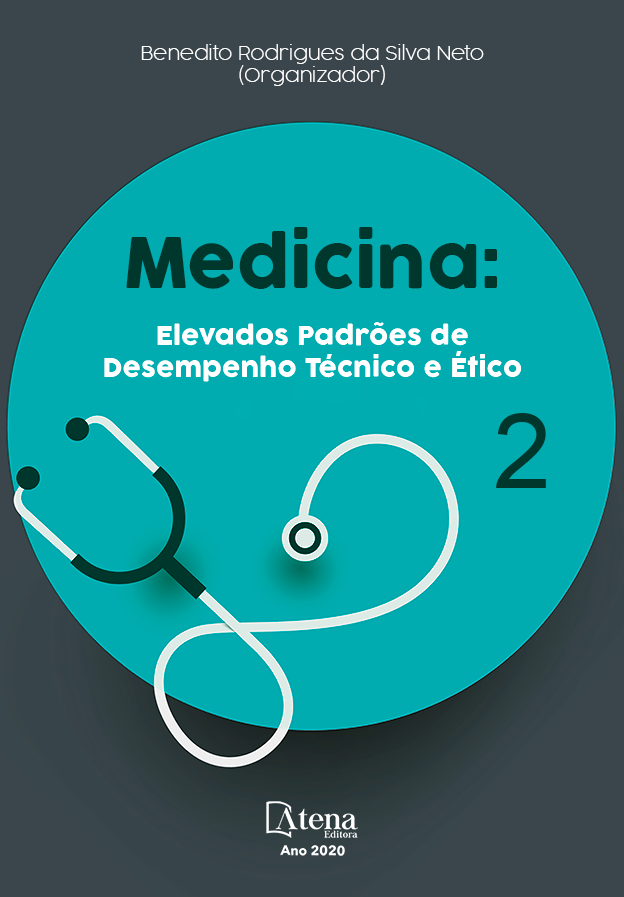
AVALIAÇÃO DA TAXA DE INFECÇÃO NA FERIDA OPERATÓRIA, PÓS APENDICECTOMIA POR INCISÃO ESPECÍFICA E HIGIENIZAÇÃO, APÓS O FECHAMENTO DA APONEUROSE
A Infecção do Sítio Cirúrgico (ISC) é uma das principais causas de infecções relacionadas à assistência à saúde no Brasil, ocupando a terceira posição entre todas as infecções em serviços de saúde e compreendendo 14% a 16% daquelas encontradas em pacientes hospitalizados. Como estratégia para prevenção de ISC, realiza-se a antibioticoterapia profilática, no entanto, muitas bactérias presentes no ambiente hospitalar tornaram-se resistentes à maioria dos antibióticos utilizados no perioperatório, aumentando os custos do hospital e prejudicando a recuperação do paciente. Existem poucos estudos na literatura relacionados a higienização do sítio cirúrgico com soluções tópicas e sua associação com a taxa de infecção de feridas. O objetivo deste estudo foi estimar a taxa de infecção de ferida operatória, após apendicectomias por incisão específica e higienizadas após o fechamento da aponeurose. Trata-se de um estudo quantitativo, prospectivo e analítico realizado em uma mesma instituição entre outubro de 2018 a outubro de 2019. Como resultado, em uma amostra 66 pacientes divididos em grupos de acordo com as substâncias usadas na assepsia (soro fisiológico n=33; clorexidina n=25; e iodo tópico n=11), foi identificado infecção de ferida operatória em 3 casos, todos higienizados com soro fisiológico, sendo constatado no 4º, 10º e 14º dia de pós-operatório respectivamente. Não houve significância estatística para um intervalo de 95%. No setor da cirurgia geral da instituição não há homogeneidade nas condutas, ficando a critério do cirurgião a higienização do sítio cirúrgico no perioperatório. Ainda há necessidade de uma maior amostra, bem como expandir para outros tipos de incisões. As ISC estão associadas a uma maior morbidade pós-operatória, representando um custo adicional substancial a saúde e tornando essa uma preocupação para as equipes cirúrgicas, Comissão de Controle de Infecção Hospitalar (CCIH) e gestores hospitalares.
AVALIAÇÃO DA TAXA DE INFECÇÃO NA FERIDA OPERATÓRIA, PÓS APENDICECTOMIA POR INCISÃO ESPECÍFICA E HIGIENIZAÇÃO, APÓS O FECHAMENTO DA APONEUROSE
-
DOI: 10.22533/at.ed.7162016116
-
Palavras-chave: Apendicectomia; Ferida operatória; Infecção de sítio cirúrgico.
-
Keywords: Appendectomy; Surgical site infection; Surgical wound.
-
Abstract:
The surgical site infection (SSI) is one of the main causes of health assistance related infections in Brazil, staying in third position amongst all infections on the health system and being between 14% to 16% of those found in hospitalized patients. As a strategy to prevent the SSI, an antibiotic prophylaxis is done, still during the induction of anesthesia. However, many of the bacterias found in the hospital environment become drug resistant to the vast majority of the antibiotics used on peroperatory, increasing the hospital costs, as well as disturbing the patient's recovery. Only a few studies relating the SSI to the assepsy of the surgical site with topic solutions exist in the current literature. This study aims to estimate the SSI rate, after appendectomy thru specific incision and with a perioperative assepsia following the aponeurosis sintesis. This is a quantitative, prospective and analytic study of the SSI among patients from the same institution from October 2018 to October 2019. The result shows that: in 66 patientes, divided in groups according to the substances used on the assepsy, SSI was identified in three cases, all of them in which physiologic solution 0,9% was used, respectively, on the 4th, 10th and 14th postoperative day. No statistical significance was seen on a 95% interval. In the General Surgery sector of our institution, there is no protocol in relation to SSI, therefore the higiene of the surgical site is according to the surgeon´s decision. We believe that a bigger sample is mandatory, as well as the investigation of the other types of incision. The SSI is associated with a higher postoperative morbidity rate, which leads to a more expensive bill to the health insurance, public system or patient and a concern to the surgeons, nosocomial infection control commission and hospital director.
-
Número de páginas: 12
- Igor Dominick Michalick
- Joana Mendes Conegundes
- Jéssica Gomes Baldoino Araújo
- Mariana Araújo de Moura Silva
- Alisson Rodrigues Pinto
- Maria Alice Matias Cardozo


